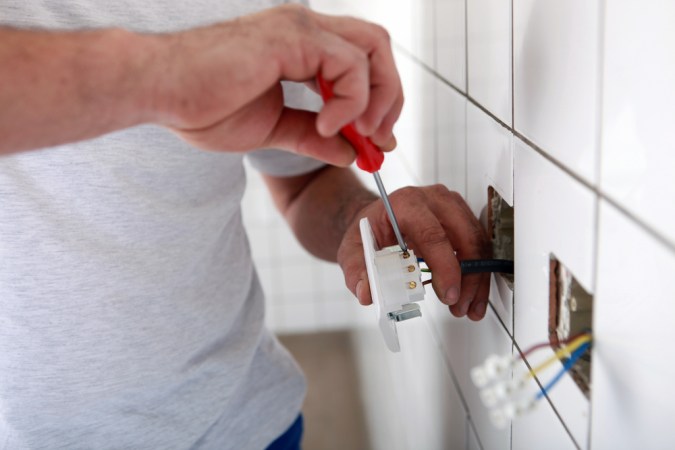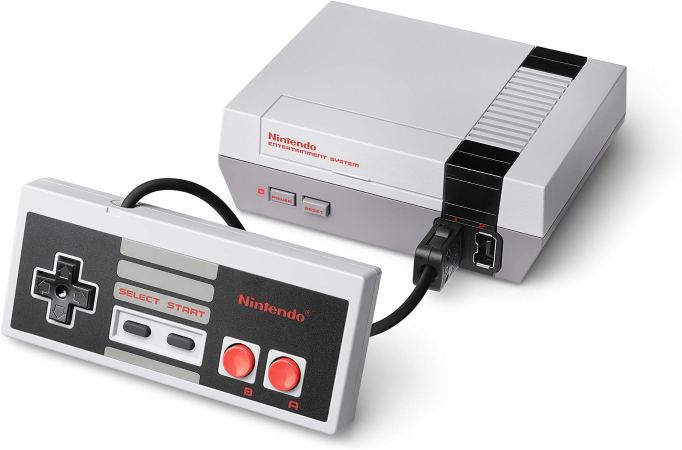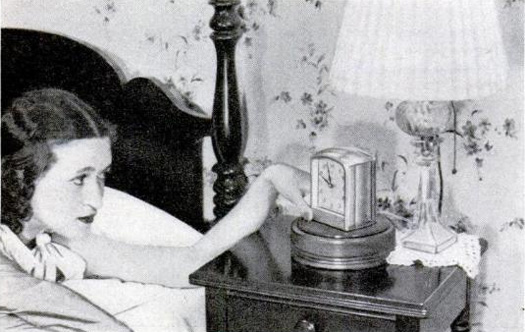

You’ve created a killer workspace, but the underside of your desk looks like Medusa’s worst hair day. With power cables, speaker wire, and the giant surge protector everything plugs into, a serious workstation can amass a lot of connections. Here are three steps to hide them away for a clutter-free space.
Hang them up
Getting your cables off the ground is the first and most crucial part of organizing them. If you keep them close to the underside of your desk’s surface, they’ll be hidden from view to anyone standing in the vicinity, creating a clutter-free environment so you can do your best work (that is, unless your desk is glass, which is very unforgiving to messes).
This, for example, is what my desk looks like without any cable management:

There are a number of ways to remedy this rat’s nest. I currently use the $15 IKEA SIGNUM cable management tray to mount my cables to the underbelly of my desk, though I’ve also used rain gutters with good results. You could even use pegboard, or a shallow wire basket if you have one lying around. Mount your tool of choice on the bottom of your desk, re-run your cables through it, and you’ll be on your way. The more you can keep them separated from one another, the easier they’ll be to manage later on, but don’t stress out too much—it’s very, very difficult to keep things neat and tidy under there if you have a lot of cables. (I tried very hard, and you can see I still failed. But at least they’re hidden.)

If you have a normal, skinny surge protector, you can probably fit that on your cable management tray to get it off the ground as well. (Bonus tip: grab a couple of these short extension cables for devices with large, annoying power bricks, and you’ll be able to make use of every outlet on the strip.) If you have a larger surge protector—like the Smart Strip I’m using—it may not fit on a SIGNUM or in a rain gutter. In that case, you may want to mount the surge protector to the underside of your desk on its own, either using some Command Strips or the included screw mounts on the back.
I actually built my current desk with these tricks in mind, but you should be able to find a solution for just about any desk if you’re clever enough. Here’s what mine looks like when organized:

Bundle them together
Mounting some cable trays will hide a lot of the mess, but if you want to keep things a bit more organized—especially on the top side of your desk, where PC and monitor cables run a little wild—invest in some cable ties to bundle them together. Zip ties are the cheapest option, though I find them kind of a pain for anything I might disconnect later, so I currently use velcro-esque reusable ties like these ones instead. Alternatively, you can run your cables through a long zipper sleeve like this one. I’ve also started using these stiff rubber ties around my house, and really like them.

I wrap these around bundles of cables every foot or two along the runs under my desk, as well as behind my desk, where they can keep stray monitor, keyboard, mouse, and other cables from flapping about. It’s a small improvement that can make a big difference.
Clear your workspace

With the cables under your desk hidden away, it’s time to take care of the stragglers atop the surface. You have a few options here:
- Switch to wireless devices: If you have a mouse, keyboard, or other peripherals that come in wireless varieties, you can eliminate cables entirely by switching to Bluetooth models. They tend to be a bit more expensive than their wired brethren—and you’ll want to make sure the manufacturer is known for reliable wireless connections—but if you’re striving for a truly cable-free space, this is a given.
- Stick peripherals to the underside of your desk: Your surge protector isn’t the only thing that can hang down below. I’ve mounted my headphone amp, SD card reader, and headphone hook all to the underside of my desk using Command Strips. Their cables run through cable drops stuck to the bottom of my desk, all the way to my SIGNUM tray, so they never have to grace my sight. Not only does this eliminate cable clutter, but it eliminates desk clutter in general, while keeping those peripherals within arm’s reach.
- Build cable management into the desk surface: For things that you absolutely need on top of your workspace, find a way to build cable holes and outlets into your desk. For example, this guide at Make Magazine shows you how to install a USB hub into your desk, or you can install simple grommets for your cables to run down to the underside (instead of trailing all the way to the back of the desk).
It’s up to you which of these tips in this guide you take to heart, of course. I personally don’t like wireless mice and keyboards, so I’m willing to put up with a couple cables. Especially since my desk is still rather clean—or, at least, far cleaner than it was a few years ago before I undertook this never-ending mission. Good luck.















